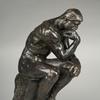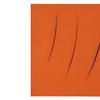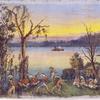Brooklyn Museum Is Only East Coast Venue for 'Soul of a Nation: Art in the Age of Black Power'
- BROOKLYN, New York
- /
- August 13, 2018
The Brooklyn Museum presents the critically acclaimed exhibition Soul of a Nation: Art in the Age of Black Power, an unprecedented look at a broad spectrum of work by African American artists from 1963 to 1983, one of the most politically, socially, and aesthetically revolutionary periods in American history. Soul of a Nation considers the varied ways that Black artists responded to the demands of an urgent moment and brings together for the first time the disparate and innovative practices of more than sixty artists from across the country, offering an unparalleled opportunity to see their significant works side by side. The Brooklyn Museum is the only East Coast venue for this exhibition, which was organized by Tate Modern in London and traveled to Crystal Bridges Museum of American Art in Bentonville, Arkansas, in early 2018. Opening September 14, the Brooklyn presentation will remain on view through February 3, 2019.
Soul of a Nation features more than 150 works of art in a sweeping aesthetic range, from figurative and abstract painting to assemblage, sculpture, photography, and performance. Among the influential artists of the time highlighted in the exhibition are Emma Amos, Frank
Bowling, Sam Gilliam, Barkley Hendricks, Betye Saar, Alma Thomas, Jack Whitten, and William T. Williams. The Brooklyn presentation will also include several works by artist and scholar David Driskell, Suzanne Jackson’s Triplical Communications (1969), and a largescale draped painting by Sam Gilliam titled Carousel Merge (1971). In addition, a monochromatic work by Emma Amos will be on view, as well as two large-scale paintings by British Guyana–born artist Frank Bowling and an abstract push-broom painting by Ed Clark from the late 1970s, which recently joined the Museum’s permanent collection.
The show begins in 1963, before the emergence of the Black Power Movement later in the decade, with the Spiral collective. This group of New York–based painters, including Romare Bearden, Norman Lewis, and Emma Amos, worked in diverse aesthetic styles and explored the role of Black artists in the struggle for civil rights. Also active in New York at the time was the Kamoinge Workshop, a group of photographers who responded to the lack of institutional support and mainstream representation of Black artists by conducting workshops and producing their own gallery shows and portfolios.
The exhibition goes on to trace how artists across the country continued to work in collectives, communities, and individually during the rise of the Black Power Movement. In Los Angeles, years of urban unrest propelled a number of artists to experiment with assemblage and sculpture. Artists such as John Outterbridge and Noah Purifoy made works inspired by the aftermath of the Watts Rebellion of 1965. Emory Douglas, who served as the minister of culture for the Black Panther Party, founded in Oakland, California, in 1966, created striking graphics and illustrations that became powerful symbols of the movement—twenty-four of which are included in the exhibition. In Chicago, a group of artists formed
AfriCOBRA, whose manifesto and aesthetic philosophy aimed to empower Black communities. Works by its founding members are on display, including Gerald Williams’s Say It Loud (1969), whose vibrant colors, graphic lettering, and use of black figures were emblematic of the AfriCOBRA style. In New York, painters incorporated symbols of protest, solidarity, and Black pride, while many organized for institutional inclusion. Also featured is artist and professor David Driskell, who drew upon similar themes in his painting, as he worked to organize university art departments across the South and promote scholarship of African American art.
The show also addresses formal concerns and aesthetic innovations across abstraction and figuration in painting and sculpture, featuring such works as Sam Gilliam’s April 4 (1969), Barkley Hendricks’s Blood (Donald Formey) (1975), Frank Bowling’s Texas Louise (1971), and Martin Puryear’s Self (1978). With its central triangular form, Jack Whitten’s powerful Homage to Malcolm (1970) recalls the pyramids that Malcolm X visited on a trip to Africa in 1964, and was painted as a memorial to the late activist. Other works show the emergence of integral figures in Black feminism such as Kay Brown, Faith Ringgold, and Betye Saar, highlighting an important moment of visibility for female artists. The exhibition concludes with a section on Just Above Midtown (JAM), the first commercial gallery space dedicated to showing the work of avant-garde Black artists, notably including artists working in performance, such as Lorraine O’Grady, David Hammons, Senga Nengudi, and others.
The timely exhibition extends the Brooklyn Museum’s trailblazing commitment to a vital period in American art, following its exhibitions Witness: Art and Civil Rights in the Sixties (2014) and We Wanted a Revolution: Black Radical Women, 1965–85 (2017), as well as the Museum’s major acquisition of forty-four works from the Black Arts Movement in 2013.
“With Soul of a Nation, we are honored to highlight the truly exceptional work produced by African American artists during one of the most significant moments in U.S. history and to honor these artists and all those arts professionals, here in Brooklyn and beyond, who have
long supported their work,” said Anne Pasternak, Shelby White and Leon Levy Director of the Brooklyn Museum.
















